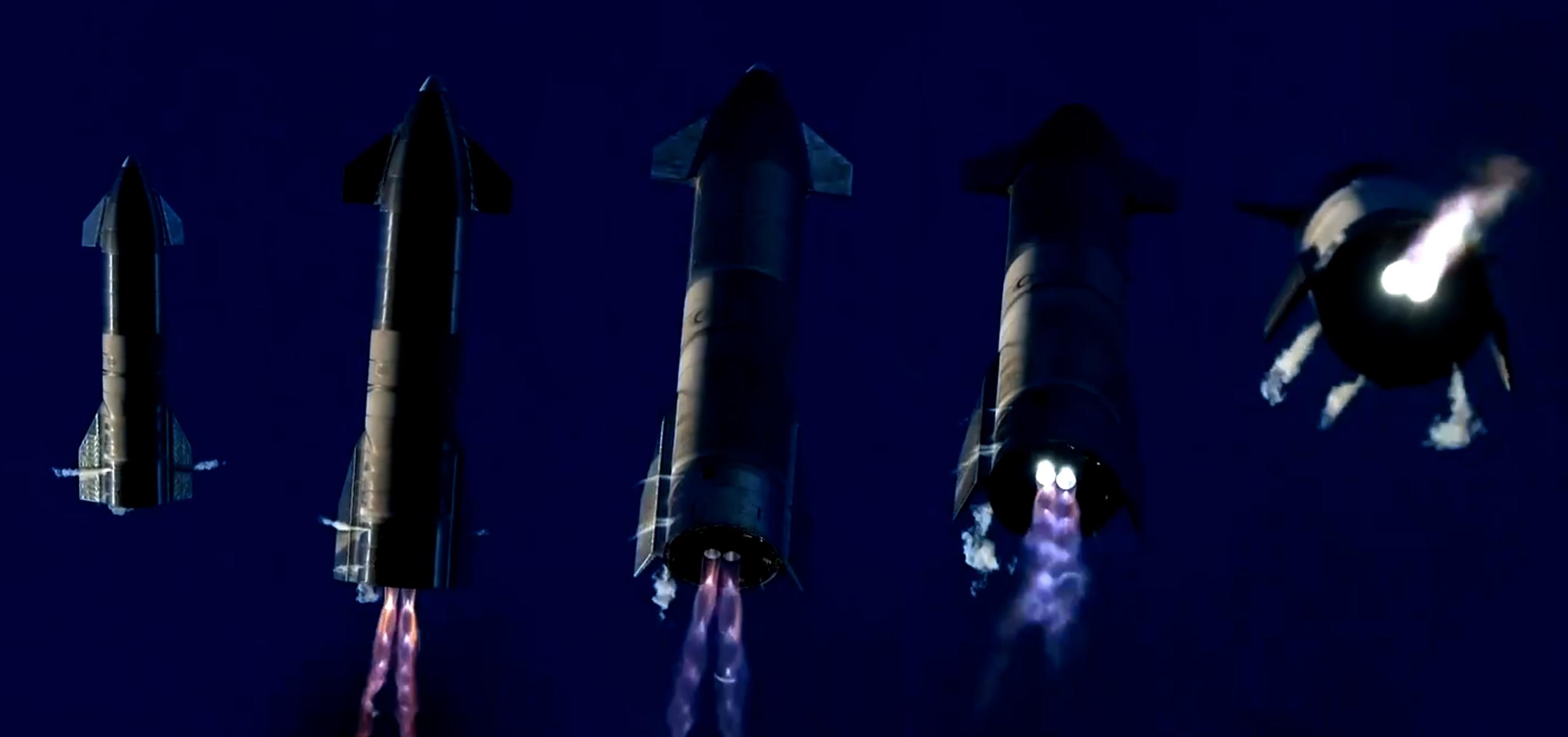

News
SpaceX Starship nails ‘flip’ maneuver in explosive landing video
Update: SpaceX has published a video taken near the launch pad of Starship nailing an exotic ‘flip’ maneuver shortly before a hard landing destroyed the rocket.
Both the company, test directors, and CEO Elon Musk have all made it abundantly clear that despite the explosive end, Starship SN8’s maiden flight was a spectacular success, proving that the rocket is capable of performing several previously-unproven maneuvers and surviving the associated stresses. Notably, according to tweets posted by Musk not long after, Starship SN8 performed almost perfectly, failing a soft landing (already proven by SN5 and SN6) solely because of low pressure in the rocket’s secondary ‘header’ fuel tank.
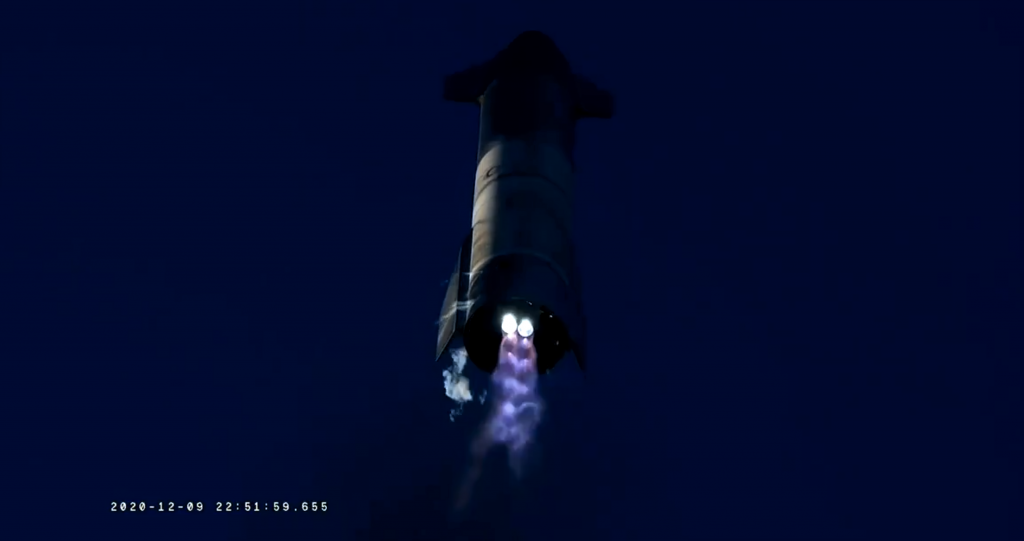
For unknown reasons, that tank or its associated plumbing were unable to maintain the pressure needed to feed Raptor with enough propellant, resulting in fuel starvation mid-burn. A lack of fuel and surplus of oxygen effectively turned the landing engine into a giant oxygen torch, melting the copper walls of its combustion chamber (hence the green plume). Had the header tank maintained the correct pressure, SN8 would have very likely landed intact (or at least had a much softer landing).
In simpler terms, it seems that Raptor isn’t to blame for Starship SN8’s failed landing and fixing a pressurization problem will be dramatically faster and easier than rectifying a rocket engine design flaw.

In perhaps the most spectacular aerospace demonstration since Falcon Heavy’s 2018 debut, SpaceX’s first full-size Starship prototype came within a hair’s breadth of sticking the landing after an otherwise successful ~12.5 km (7.8 mi) launch debut.
To quote SpaceX’s test director, heard live on the company’s official webcast moments after Starship serial number 8 (SN8) exploded on impact, “Incredible work, team!” For most, praise shortly after a rocket explosion could easily feel nonsensical, but in the context of SpaceX’s iterative approach to development, a Starship prototype failing just moments before the end of a multi-minute test can be considered a spectacular success.
Chock full of surprises, Starship SN8 ignited its three Raptor engines for the third time and lifted off at 4:45 pm CST (UTC-6) on the program’s high-altitude launch debut.
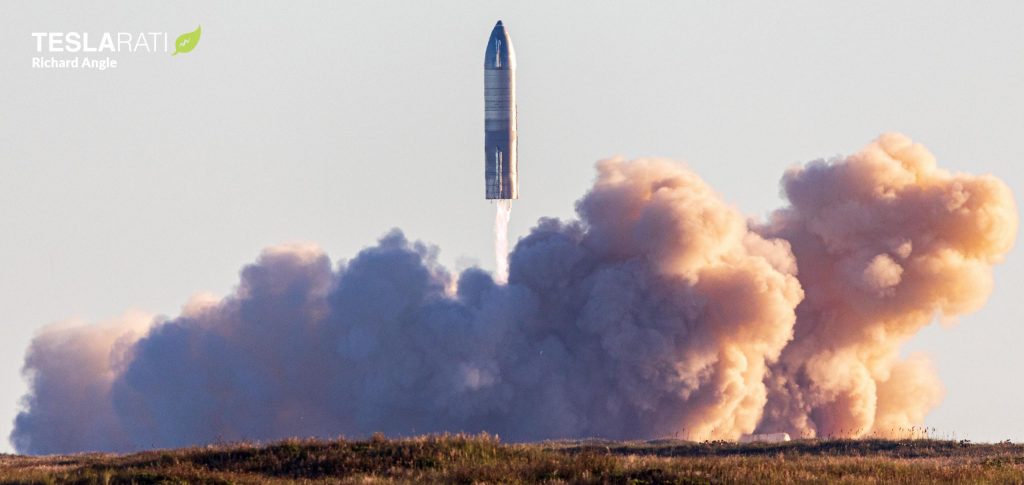
About 100 seconds after liftoff, already representing the longest-known ignition of one – let alone three – Raptor engines, one of those three engines appeared to shut down, causing the two remaining engines to gimbal wildly in an effort to retain control. Another two minutes after that, one of those Raptors also shut down, leaving one engine active. That one engine continued to burn for another minute and a half, producing just enough thrust to more or less maintain Starship SN8’s altitude at apogee while performing a bizarre horizontal slide maneuver.
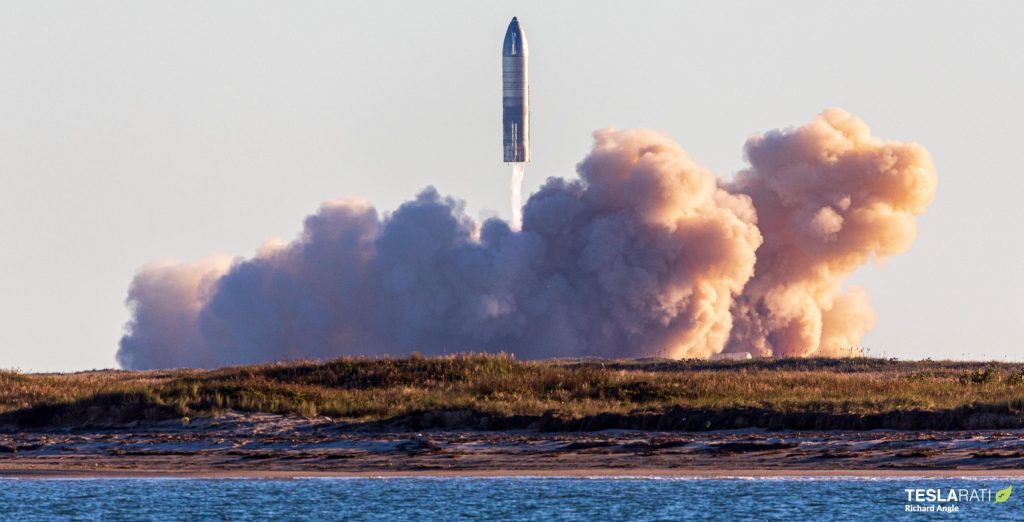


Finally, at a bit less than five minutes after liftoff, Starship cut off all Raptor engines and began falling back to earth. Looking spectacularly similar to fan-made renders and CGI videos of the highly-anticipated ‘skydiver’ or ‘belly-flop’ maneuver, Starship – belly down – spent around two minutes in a rock-solid freefall, using four large flaps to maintain stability.
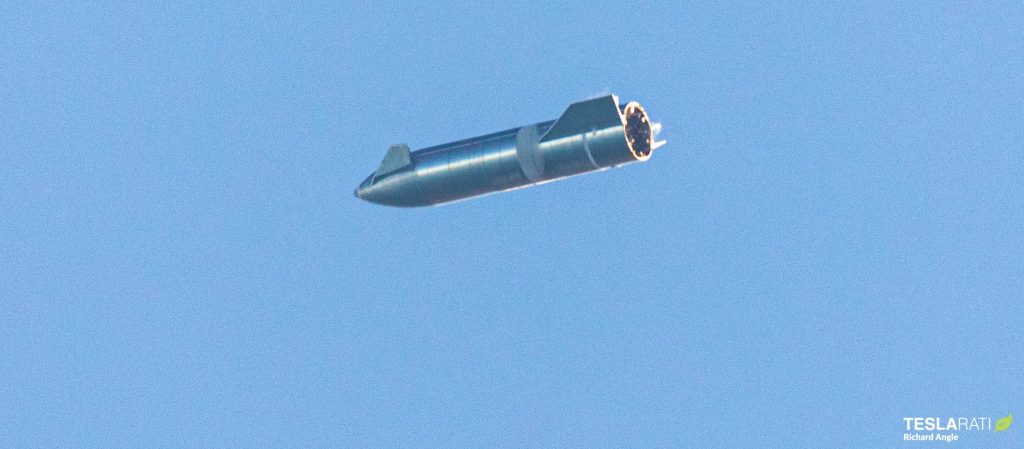


Around 4:52 pm, Starship SN8 performed exactly as expected, igniting one – and then two – Raptor engines while fully parallel to the ground to complete an aggressive 90-degree flip, transitioning into vertical flight for an attempted landing. Unfortunately, although it’s difficult to judge what was intentional and what was not, things began to go wrong after that point -visible in the form of one of the two reignited Raptors flashing green before shutting down.
At the same time, the plume of the lone remaining engine flashed an electric green, quite literally consuming its copper-rich internals in an unsuccessful attempt to slow Starship down. According to SpaceX CEO Elon Musk, Raptor performed “great” throughout the launch and landing attempt, with the bright-green plume likely explained by extremely oxygen-rich combustion caused by low “fuel header tank pressure.”
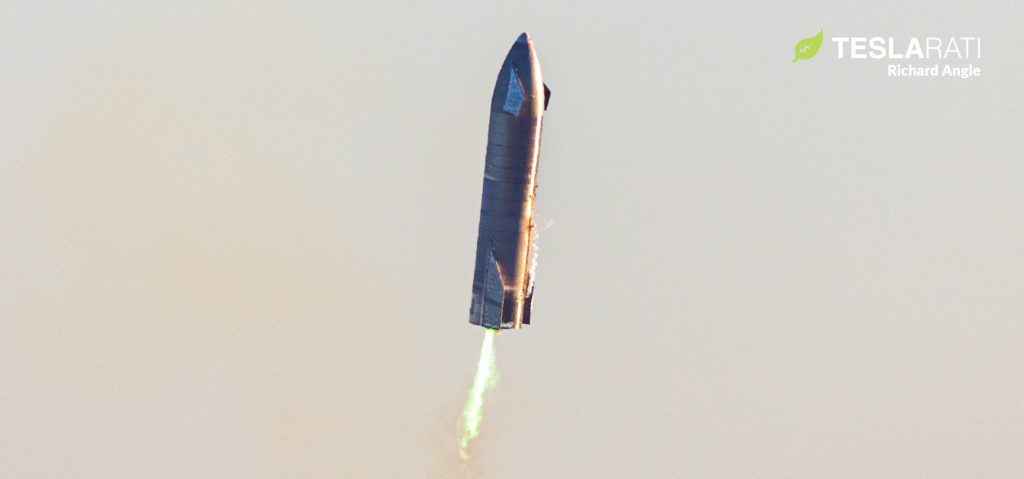
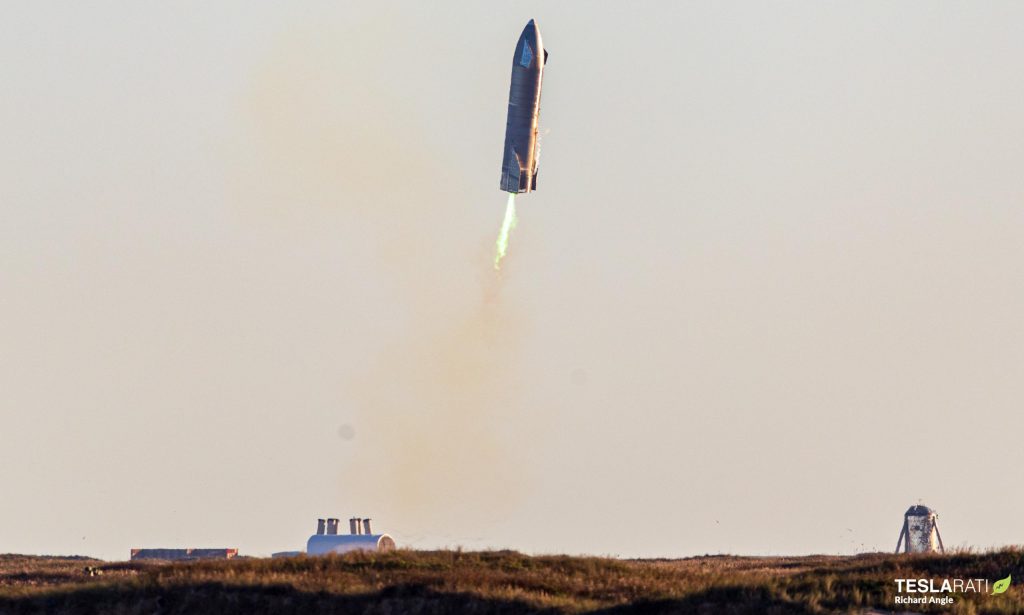
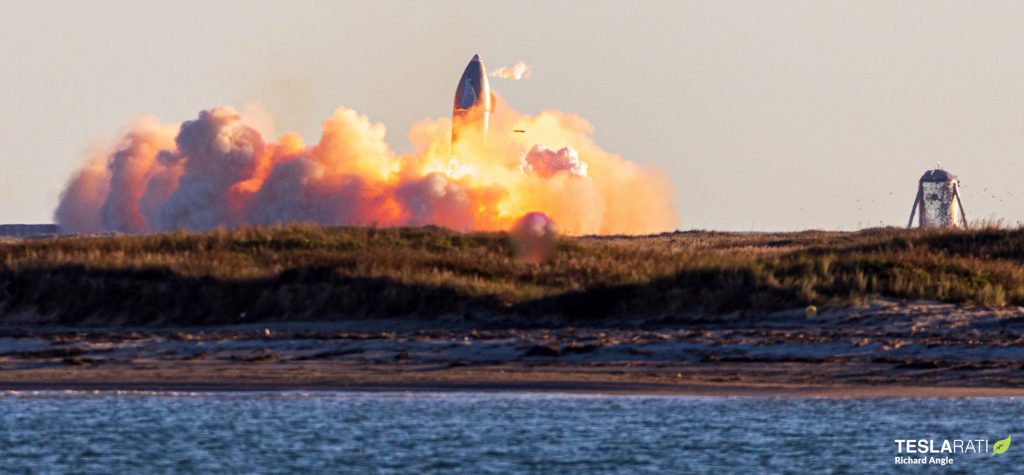

Regardless of the specific cause, Starship SN8 smashed into the ground around 10-20 seconds early, traveling about 30 m/s (~70 mph) too fast. To be clear, in SpaceX’s eyes, the test – primarily focused on demonstrating multi-engine ascent, freefall stability, header tank handover, engine reignition, and a flip-over maneuver – was a spectacular success, completing almost every single objective and seemingly doing so without any major issues.
Clocking in at an incredible (and unexpected) ~400 seconds (~6.5 minutes) from liftoff to explosion, it’s difficult to exaggerate the sheer quantity of invaluable data SpaceX has likely gathered from SN8’s sacrifice. Thanks to SN8’s primarily successful debut, SpaceX’s Starship test and launch facilities (minus the rocket’s remains on the landing zone) appear to be almost completely unharmed, likely requiring only minor repairs and refurbishment. Further, Starship SN9 is effectively complete and patiently waiting a few miles down the road, ready to roll to the launch pad almost as soon as SpaceX has understood the cause of SN8’s hard landing.
Stay tuned for more analysis, photos, and videos as the dust settles.

Elon Musk
Elon Musk and Tesla AI Director share insights after empty driver seat Robotaxi rides
The executives’ unoccupied tests hint at the rapid progress of Tesla’s unsupervised Robotaxi efforts.

Tesla CEO Elon Musk and AI Director Ashok Elluswamy celebrated Christmas Eve by sharing personal experiences with Robotaxi vehicles that had no safety monitor or occupant in the driver’s seat. Musk described the system’s “perfect driving” around Austin, while Elluswamy posted video from the back seat, calling it “an amazing experience.”
The executives’ unoccupied tests hint at the rapid progress of Tesla’s unsupervised Robotaxi efforts.
Elon and Ashok’s firsthand Robotaxi insights
Prior to Musk and the Tesla AI Director’s posts, sightings of unmanned Teslas navigating public roads were widely shared on social media. One such vehicle was spotted in Austin, Texas, which Elon Musk acknowleged by stating that “Testing is underway with no occupants in the car.”
Based on his Christmas Eve post, Musk seemed to have tested an unmanned Tesla himself. “A Tesla with no safety monitor in the car and me sitting in the passenger seat took me all around Austin on Sunday with perfect driving,” Musk wrote in his post.
Elluswamy responded with a 2-minute video showing himself in the rear of an unmanned Tesla. The video featured the vehicle’s empty front seats, as well as its smooth handling through real-world traffic. He captioned his video with the words, “It’s an amazing experience!”
Towards Unsupervised operations
During an xAI Hackathon earlier this month, Elon Musk mentioned that Tesla owed be removing Safety Monitors from its Robotaxis in Austin in just three weeks. “Unsupervised is pretty much solved at this point. So there will be Tesla Robotaxis operating in Austin with no one in them. Not even anyone in the passenger seat in about three weeks,” he said. Musk echoed similar estimates at the 2025 Annual Shareholder Meeting and the Q3 2025 earnings call.
Considering the insights that were posted Musk and Elluswamy, it does appear that Tesla is working hard towards operating its Robotaxis with no safety monitors. This is quite impressive considering that the service was launched just earlier this year.
Elon Musk
Starlink passes 9 million active customers just weeks after hitting 8 million
The milestone highlights the accelerating growth of Starlink, which has now been adding over 20,000 new users per day.

SpaceX’s Starlink satellite internet service has continued its rapid global expansion, surpassing 9 million active customers just weeks after crossing the 8 million mark.
The milestone highlights the accelerating growth of Starlink, which has now been adding over 20,000 new users per day.
9 million customers
In a post on X, SpaceX stated that Starlink now serves over 9 million active users across 155 countries, territories, and markets. The company reached 8 million customers in early November, meaning it added roughly 1 million subscribers in under seven weeks, or about 21,275 new users on average per day.
“Starlink is connecting more than 9M active customers with high-speed internet across 155 countries, territories, and many other markets,” Starlink wrote in a post on its official X account. SpaceX President Gwynne Shotwell also celebrated the milestone on X. “A huge thank you to all of our customers and congrats to the Starlink team for such an incredible product,” she wrote.
That growth rate reflects both rising demand for broadband in underserved regions and Starlink’s expanding satellite constellation, which now includes more than 9,000 low-Earth-orbit satellites designed to deliver high-speed, low-latency internet worldwide.
Starlink’s momentum
Starlink’s momentum has been building up. SpaceX reported 4.6 million Starlink customers in December 2024, followed by 7 million by August 2025, and 8 million customers in November. Independent data also suggests Starlink usage is rising sharply, with Cloudflare reporting that global web traffic from Starlink users more than doubled in 2025, as noted in an Insider report.
Starlink’s momentum is increasingly tied to SpaceX’s broader financial outlook. Elon Musk has said the satellite network is “by far” the company’s largest revenue driver, and reports suggest SpaceX may be positioning itself for an initial public offering as soon as next year, with valuations estimated as high as $1.5 trillion. Musk has also suggested in the past that Starlink could have its own IPO in the future.
News
NVIDIA Director of Robotics: Tesla FSD v14 is the first AI to pass the “Physical Turing Test”
After testing FSD v14, Fan stated that his experience with FSD felt magical at first, but it soon started to feel like a routine.

NVIDIA Director of Robotics Jim Fan has praised Tesla’s Full Self-Driving (Supervised) v14 as the first AI to pass what he described as a “Physical Turing Test.”
After testing FSD v14, Fan stated that his experience with FSD felt magical at first, but it soon started to feel like a routine. And just like smartphones today, removing it now would “actively hurt.”
Jim Fan’s hands-on FSD v14 impressions
Fan, a leading researcher in embodied AI who is currently solving Physical AI at NVIDIA and spearheading the company’s Project GR00T initiative, noted that he actually was late to the Tesla game. He was, however, one of the first to try out FSD v14.
“I was very late to own a Tesla but among the earliest to try out FSD v14. It’s perhaps the first time I experience an AI that passes the Physical Turing Test: after a long day at work, you press a button, lay back, and couldn’t tell if a neural net or a human drove you home,” Fan wrote in a post on X.
Fan added: “Despite knowing exactly how robot learning works, I still find it magical watching the steering wheel turn by itself. First it feels surreal, next it becomes routine. Then, like the smartphone, taking it away actively hurts. This is how humanity gets rewired and glued to god-like technologies.”
The Physical Turing Test
The original Turing Test was conceived by Alan Turing in 1950, and it was aimed at determining if a machine could exhibit behavior that is equivalent to or indistinguishable from a human. By focusing on text-based conversations, the original Turing Test set a high bar for natural language processing and machine learning.
This test has been passed by today’s large language models. However, the capability to converse in a humanlike manner is a completely different challenge from performing real-world problem-solving or physical interactions. Thus, Fan introduced the Physical Turing Test, which challenges AI systems to demonstrate intelligence through physical actions.
Based on Fan’s comments, Tesla has demonstrated these intelligent physical actions with FSD v14. Elon Musk agreed with the NVIDIA executive, stating in a post on X that with FSD v14, “you can sense the sentience maturing.” Musk also praised Tesla AI, calling it the best “real-world AI” today.








